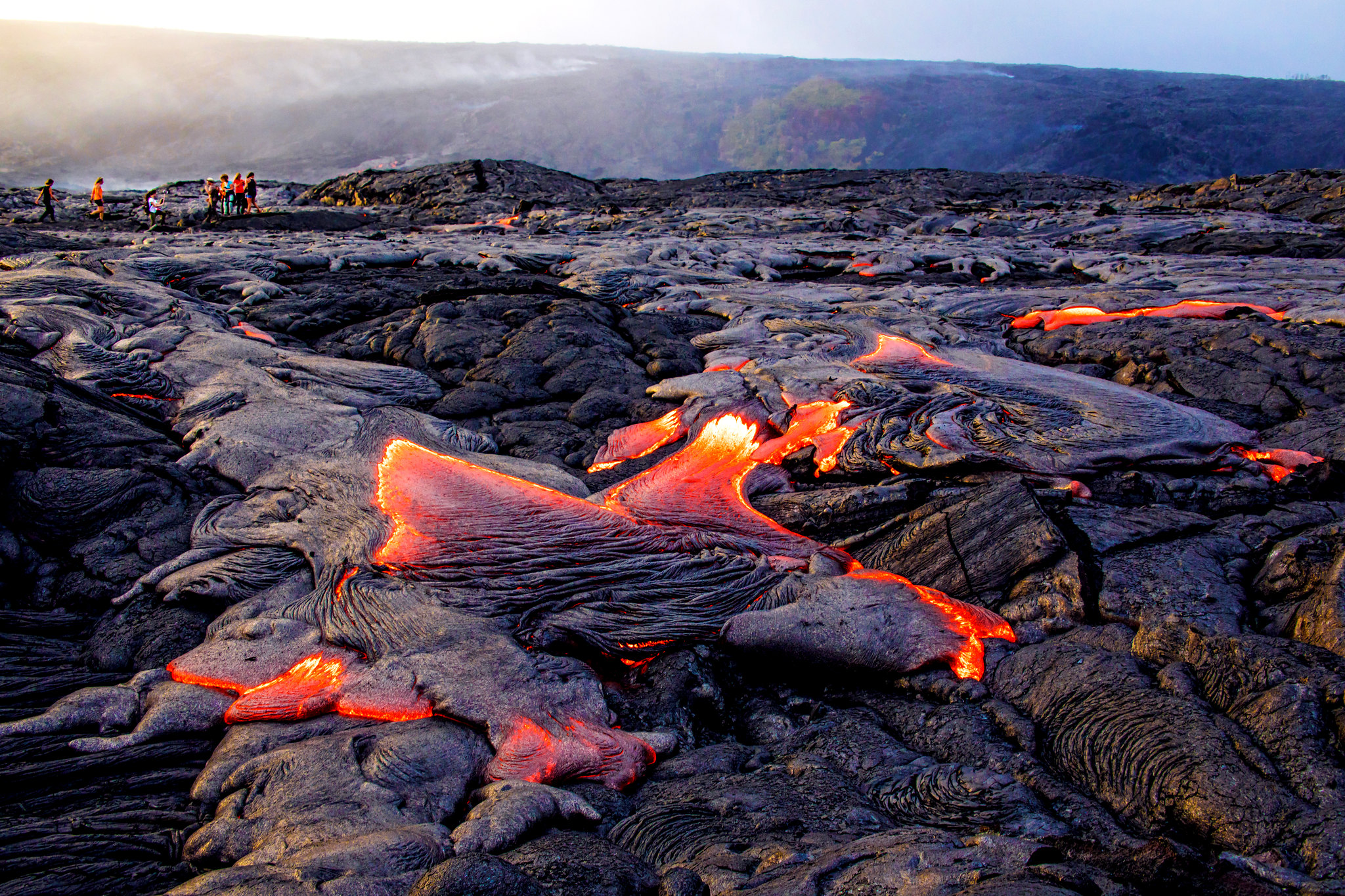When you think of Hawaii, images of pristine beaches, swaying palm trees, and crystal-clear waters might come to mind. However, the Big Island offers a completely different kind of adventure that’s equally captivating – exploring the lava tubes of Kilauea Volcano in Hawaii Volcanoes National Park.
Lava tubes are natural underground tunnels formed by flowing lava, and they offer a unique glimpse into the geological history of the Hawaiian Islands. As you descend into these subterranean passages, you’ll feel like you’re entering another world entirely. The air becomes cooler, the light dims, and the sounds of the outside world fade away, replaced by the echoes of your footsteps and the occasional drip of water.
One of the most popular lava tubes in the park is the Thurston Lava Tube, also known as Nāhuku. This 500-year-old tube is easily accessible and well-lit, making it perfect for first-time explorers. As you walk through the tunnel, which stretches about 600 feet long, you’ll notice the smooth walls and ceiling, sculpted by the intense heat of molten lava. The tube’s floor is relatively flat, thanks to years of foot traffic, but you can still see evidence of the lava’s flow patterns if you look closely.
For those seeking a more adventurous experience, the park offers guided tours of less-visited lava tubes. These tours often require participants to wear helmets and carry flashlights, as the tubes can be darker and more challenging to navigate. However, the extra effort is well worth it, as these lesser-known tubes often feature more dramatic formations and a greater sense of discovery.
As you explore these underground wonders, it’s important to remember that lava tubes are fragile ecosystems. The park rangers emphasize the importance of leaving no trace and avoiding touching the walls or any formations you might encounter. This is not just for the preservation of the tubes themselves, but also for the protection of the unique life forms that call these dark caverns home.
Speaking of life forms, one of the most fascinating aspects of lava tube exploration is the opportunity to spot cave-adapted creatures. Keep an eye out for small, pale insects that have evolved to thrive in the darkness. You might also see roots from plants growing on the surface, which have found their way through cracks in the ceiling in search of moisture.
As you emerge from the lava tubes back into the sunlight, you’ll likely find yourself with a newfound appreciation for the powerful forces that shaped the Hawaiian landscape. The contrast between the lush, tropical vegetation above ground and the stark, otherworldly environment below is truly striking.
It’s worth noting that the conditions in and around Kilauea Volcano can change rapidly due to volcanic activity. Before planning your lava tube adventure, be sure to check the park’s official website or speak with a ranger for the most up-to-date information on accessibility and safety conditions.
Exploring the lava tubes of Kilauea Volcano is just one of the many incredible experiences Hawaii Volcanoes National Park has to offer. From witnessing the glow of active lava flows to hiking through diverse ecosystems, the park provides a unique opportunity to witness the raw power of nature up close. So, the next time you find yourself on the Big Island, don’t forget to venture beyond the beaches and dive into the fascinating underworld of Hawaii’s volcanic landscape. It’s an experience that will stay with you long after you’ve returned home, a reminder of the ever-changing, always awe-inspiring world we live in.
Hawaii Volcanoes National Park stands as a testament to the raw power and beauty of Earth’s geological processes. This unique landscape showcases the ongoing creation of the Hawaiian Islands through volcanic activity, offering visitors a rare opportunity to witness the birth of new land.
The park’s diverse ecosystems, from lush rainforests to barren lava fields, provide a haven for numerous endemic species and serve as a living laboratory for scientific research. As both a natural wonder and a cultural treasure, Hawaii Volcanoes National Park continues to inspire awe, educate the public about volcanic processes, and preserve the delicate balance between nature and human interaction in one of the world’s most dynamic environments.

